- Administrator
- Albums and Singles
 In 1992, 8-bit samplers were cutting-edge gear. This reissue of Chaleur Humaine by French siblings Danielle and Didier Jean, shows Didier's use of a sampler to reshape and project his sister’s voice into a memorable, magical-sounding dream world with barely discernible hints of doom under the glossy enveloping surface. At times it is reminiscent of the tracks "Alsee," "Criminie," "Bruma," and " Wask," on Nuno Canavarro’s Plux Quba (1988). Very different albums in some senses, but in a wildly imperfect analogy, the recognizable voice parts on Plux are like Elizabeth Fraser hiccuping through tubes in an Yves Tanguy surrealist painting whereas Chaleur resembles Virginia Astley and Sheila Chandra harmonizing with helium-high hedgehogs in a symbolist landscape by Marc Chagall.
In 1992, 8-bit samplers were cutting-edge gear. This reissue of Chaleur Humaine by French siblings Danielle and Didier Jean, shows Didier's use of a sampler to reshape and project his sister’s voice into a memorable, magical-sounding dream world with barely discernible hints of doom under the glossy enveloping surface. At times it is reminiscent of the tracks "Alsee," "Criminie," "Bruma," and " Wask," on Nuno Canavarro’s Plux Quba (1988). Very different albums in some senses, but in a wildly imperfect analogy, the recognizable voice parts on Plux are like Elizabeth Fraser hiccuping through tubes in an Yves Tanguy surrealist painting whereas Chaleur resembles Virginia Astley and Sheila Chandra harmonizing with helium-high hedgehogs in a symbolist landscape by Marc Chagall.
A poem recurs throughout Chaleur Humaine in a variety of languages, including English, Russian, Arabic, Hebrew, and Vietnamese: "It’s this force, almost animal, warm, like a kiss, fresh like the morning dew, that we call human warmth" but not even that can derail this sultry cinematic music. Wordless vocalizing is used as glitchy percussive punctuation and haunting backdrop. Spoken word combines with splashes of metallic synth, angelic and robotic gibbering, as Didier digitally accelerates, delays and reverses sound sources to create an ambient landscape across which the imagination may travel. I felt I was in a futuristic sound sauna one minute and the next was at the wheel of a car, filmed from above, speeding across deserts, gliding over bridges, and easing through streets ablaze with neon nightlife.
No parts of this album should be skipped, and I’m not picking highlights here so much as listing examples. At just over six minutes "Memoire Vive" is perhaps the cornerstone of the recording, the proof in the pudding, meringue light/spotted dick substantial. It is as sleek and sensual as Air and Brigitte Bardot collaborating for a Bond movie theme. Other songs are brilliantly brief (the icy eroticism of the title piece runs at just 1.40). I think of this record less in terms of rainforest and meditation and far more as a bright yet brooding sci-fi soundtrack. God knows it would have livened up the dull as fifty shades of dystopia Blade Runner 2049.
Didier uses spare flourishes of piano and brass to great effect, and the combination of strings with his treatment of Danielle's voice at the start of "Human" have an aching melancholic overdrive similar to more recent compositions by Max Richter. Soon enough, though, UMAN ditch that for a breezy, pseudo-swing, like elevator music for an elevator capable of rising out the top of a building into the clouds.
The melody of "Cordes Sensible" flickers like low setting sunlight in a car driver’s eyes, then the track glides into a propulsive rhythm and drops in a deeper bass sound. It’s almost in Moon Safari territory. "Maelstrom" has reverse breathing which I like to imagine sucks the lazy "New Age" music tag into a cup and throws it out of that speeding car. Since the duo are environmentally conscious let's also imagine it lands neatly in a recycle/reuse bin.
Surely no one will trot out a list of more recent artists and claim that Chaleur Humaine evolved music (that cannot even seriously be argued for Plux Quba), but it truly is a strange and lovely milestone on the analog-digital road. UMAN call themselves "harmony architects’ and while they have created a fine musical structure here, part of their original inspiration may have been to encourage planet-wide unity. This is not possible through overt messages, but keep in mind the subliminal effects of music. Parts of the album gave me a daydream of Kubrick’s evolved planet-sized baby at the end of 2001 and I reimagined the mega-infant sweetly warbling a dreadful warning. Yes, it was only Didier manipulating his sister's voice on a forgotten recording. Our planet has changed since 1992, and while human warmth is one thing, global warming is quite another. If Earth now resembles a vehicle pulling onto an irreversible road to hellish heat death, this beautifully innocent and irrelevant record can be a heavenly note in the glove-compartment of that prophesy. And if there are to be water wars, then (to misquote a hit man from the film In Bruges) "if UMAN have got the Vietnamese, I’m definitely fighting on their side."
Read More
- Anthony D'Amico
- Albums and Singles
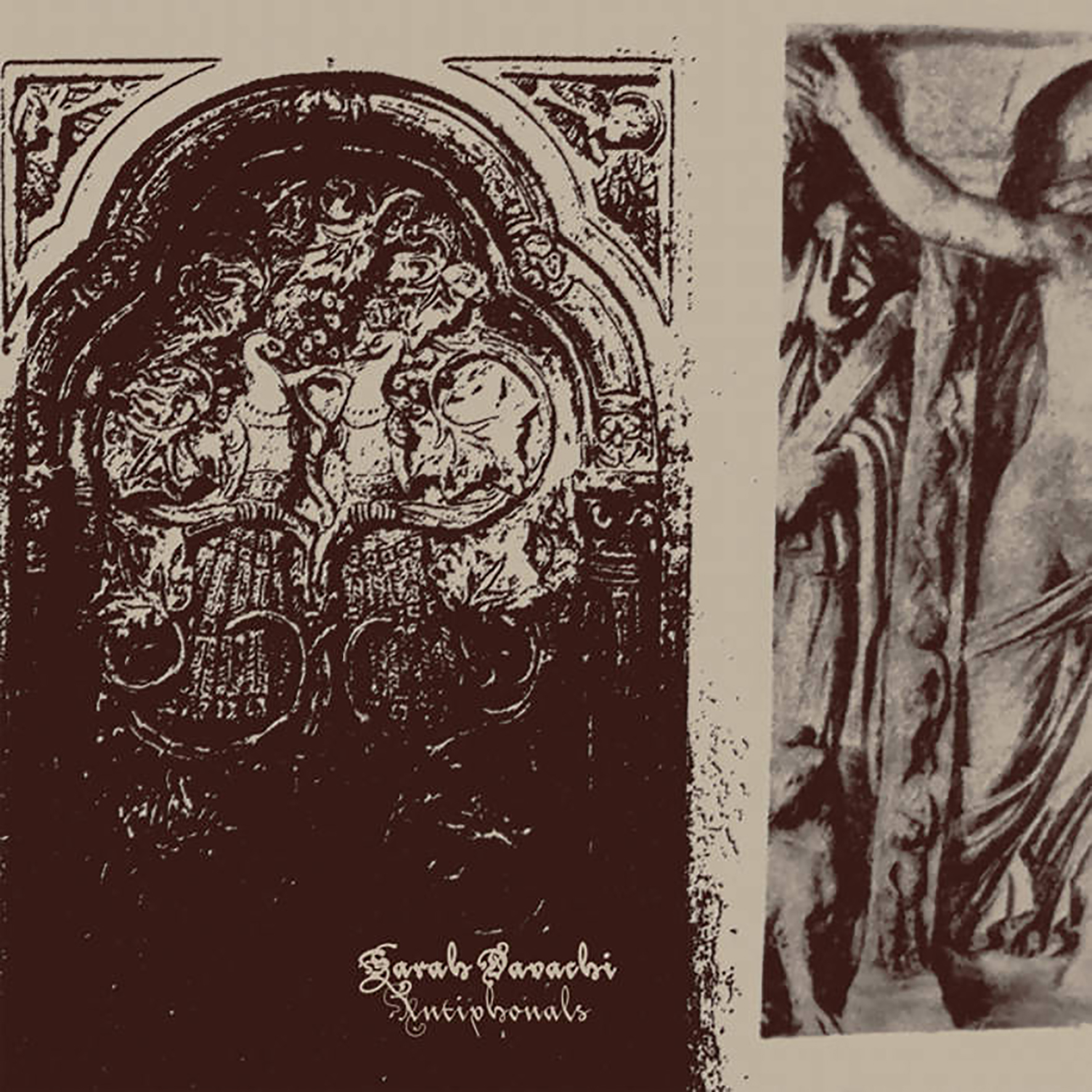 In my review of Cantus Figures Laurus last month, I half-jokingly noted that Sarah Davachi's creative arc seems unavoidably headed towards composing a full-on Mellotron-driven prog rock opus. While she has not quite reached that dubious culminating achievement yet, Antiphonals is arguably another significant step in that direction, as it is very Mellotron-centric and the vinyl release features a sticker comparing it to a prog album with everything removed except the keyboard parts. For the most part, however, the change in instrumentation did not inspire any particularly dramatic stylistic transformations, as Antiphonals mostly picks up right where Cantus, Descant left off, which is somewhere best described as "like a blurred, stretched, and deconstructed organ mass." In keeping with that theme, both an electric organ and a pipe organ are featured (along with plenty of other instruments), yet the resemblance to an organ mass is more spiritual than overt this time around. In more concrete terms, that means that Davachi's sound palette has broadened a bit from Cantus, but she is still very much focused on somberly meditative moods, glacial melodies, bleary drones, and subtle harmonic transformations.
In my review of Cantus Figures Laurus last month, I half-jokingly noted that Sarah Davachi's creative arc seems unavoidably headed towards composing a full-on Mellotron-driven prog rock opus. While she has not quite reached that dubious culminating achievement yet, Antiphonals is arguably another significant step in that direction, as it is very Mellotron-centric and the vinyl release features a sticker comparing it to a prog album with everything removed except the keyboard parts. For the most part, however, the change in instrumentation did not inspire any particularly dramatic stylistic transformations, as Antiphonals mostly picks up right where Cantus, Descant left off, which is somewhere best described as "like a blurred, stretched, and deconstructed organ mass." In keeping with that theme, both an electric organ and a pipe organ are featured (along with plenty of other instruments), yet the resemblance to an organ mass is more spiritual than overt this time around. In more concrete terms, that means that Davachi's sound palette has broadened a bit from Cantus, but she is still very much focused on somberly meditative moods, glacial melodies, bleary drones, and subtle harmonic transformations.
As was previously the case with Cantus, Descant, Antiphonals' title plainly states the compositional theme of the album. The term is usually applied to liturgical or traditional choral music and roughly means that two choirs are singing different themes that interact with each other. While there are not any choirs here, the album’s overarching aesthetic seems to be sketchlike compositions in which Davachi brings together two simple motifs to rub up against one another in interesting ways. I say "sketchlike" because she does not seem particularly interested in crafting strong melodies or complete compositional arcs for most of these pieces, opting to instead zoom in closely on harmonies and textures that tend to come to an abrupt end when a piece has run its course. That said, the album does feature one (somewhat) fully formed and melodic centerpiece ("Gradual of Image") that combines minor key acoustic arpeggios, a quietly gorgeous organ melody, and fluttering, dreamy layers of Mellotron. That is Davachi's most "prog" moment and it executed beautifully. For me, however, the album’s zenith is the ghostly drone of "Magdalena," which sounds like a spectral brass ensemble conjuring slow motion waves of aching melancholy. It is a masterful slow burn, gradually revealing shifting patterns and warm harmonies. In fact, it may be one of the most perfect pieces that Davachi has composed to date, so the album's primary allure is "one killer drone piece and a very promising prog detour," but a couple of the remaining pieces are compelling as well. For example, "Border of Mind" initially sounds like a murky tape of a small string ensemble trying their damnedest to acoustically replicate Sunn O)))'s gnarled and blown-out drones, but it quickly dissolves into a hallucinatory coda of smeared flutes and uneasily dissonant harmonies. Elsewhere, "Rushes Recede" takes the opposite route, as bleary flute-like Mellotron drones gradually blossom into something resembling a sublime organ mass. For me, "Rushes Recede" feels like the third and final highlight of the album, yet fans who are more enamored with Davachi's recent indulgently minimal "ancient cathedral" direction will likely find Antiphonals to be a worthy successor to Cantus, Descant. While this is admittedly not my favorite side of her work, I can still very much appreciate the way she is slowing down and burrowing deeper, as though she is tenaciously peeling away layer after layer of craft to get to the pure essence of her vision.
Samples can be found here.
Read More
- Administrator
- Albums and Singles
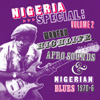 This is purportedly the final album in Soundway’s excellent Nigeria Special series (a fact that causes me no small amount of pain), but at least it is concluding in fine form. While some of the previous albums may have hit higher highs, the breezy, laid-back songs collected here might be the most consistently strong and listenable batch yet (though without entirely forgoing eccentricity). This will likely be the soundtrack for my summer.
This is purportedly the final album in Soundway’s excellent Nigeria Special series (a fact that causes me no small amount of pain), but at least it is concluding in fine form. While some of the previous albums may have hit higher highs, the breezy, laid-back songs collected here might be the most consistently strong and listenable batch yet (though without entirely forgoing eccentricity). This will likely be the soundtrack for my summer.
It is difficult to believe that most of the tracks compiled here have been out of print for over three decades, as this album is packed with memorable melodies and lazily infectious grooves from the very beginning. The ridiculously titled “Psychedelic Baby” kicks the album off perfectly with a languorous rhythm, sultry horns, and a pleasingly bittersweet chorus, setting a standard of excellence that does not waver until the album ends. Notably, "Psychedelic Baby" features one of my favorite soul music tropes: a spoken word monologue/confessional addressing a possibly fictitious woman (a move that only becomes more charming with the addition of heavily-accented, difficult-to-understand English). Sadly, none of the other 18 artists included here takes some time to break it down for the ladies, but they manage to hold my attention pretty well anyway. On a related note, I am also a huge fan of absurdly grandiose and unwieldy band names, an appetite that this album satisfies admirably (“Commander In Chief Stephen Osita Osadebe & His Nigerian Sound Makers” being my favorite, despite stiff competition).
There is no noticeably weak or even average material here, but there are a number of stellar tracks strewn throughout the album that stand out from the rest. Two of the best are by so-called “progressive” bands: Tunji Oyelana & The Benders and The Nkengas. In this case, however, that term has no relation to its oft-unfortunate Western connotations- instead, both bands are merely more ingenious and resourceful than their peers. Oyelana’s “Iwo Ko La Dami” features jazzy sax leads and a minimalist guitar vamp that are similar to many of the other acts from that era, but bolsters them with incredibly tight, funky, and virtuousic drumming. As for The Nkengas, their “Anyi Bundi Igbo” boasts a brilliantly space-riddled and compartmentalized production that sounds like it was filtered through Martin Hannett.
Curator Miles Claret seems to have deliberately opted for more uniformly relaxed and spacious feel with this album, eschewing the more aggressively funk-influenced and heavy-handed strains of ‘70s Nigerian music for a strong emphasis on Highlife. Nevertheless, he still snuck in some moments of oddball experimentalism. For example, “Totobiroko” is based on a hypnotically repeating bass pattern and a weirdly erratic xylophone motif, but manages to maintain an extremely cool tribal groove in the process. The album’s closer (by Joy Nwoso and Dan Satch) is still stranger, as it uses an endlessly repeating two-note bass line and languid brass hook to hold together a lurching beat and bizarrely operatic female vocals. Both tracks are certainly disorienting and outré when heard alone, but they are sequenced in such a way as to fit quite seamlessly with the less boldly ambitious surrounding material. Also, a great beat goes a long way towards making indulgent weirdness palatable.
Nigeria Special Volume 2 is an excellent place to start for anyone curious about African music. While the ‘70s birthed a lot of brilliant and vital music in countries like Nigeria, Benin, Ghana, Senegal, and Lagos, that era was also characterized by rampant clutter, over-enthusiasm, structurelessness, and bloated song-lengths. Claret is much better at sifting through it all than most, resulting in an album packed with short, hook-filled songs and killer rhythms, but without sacrificing rawness or immediacy. This is, simply put, great music. I am sad to see this series end (especially so soon after the Panama! swansong), but I am sure Miles and Soundway have something equally compelling looming on the horizon.
(The triple LP version of this album features three extra songs not covered here)
Samples:
- The Nkengas - Anyi Bundi Igbo
- Fubura Sekibo - Psychedelic Baby
- Commander In Chief Stephen Osita Osadebe & His Nigerian Sound Makers - Onyebu Chi
Read More
- Administrator
- Albums and Singles
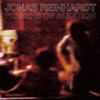 Few current artists are as conspicuously detached from their own era as San Francisco’s Jonas Reinhardt, as there is essentially nothing on Powers of Audition or 2008’s self-titled debut that betrays any inspiration gleaned from the last two decades of recorded music (or culture in general). Nevertheless, his influences are pretty eclectic within the narrow confines of analog’s golden age, as hints of space rock, early synth experimentalism, krautrock, and forgotten cult film soundtracks all find their way into his defiantly dated aesthetic.
Few current artists are as conspicuously detached from their own era as San Francisco’s Jonas Reinhardt, as there is essentially nothing on Powers of Audition or 2008’s self-titled debut that betrays any inspiration gleaned from the last two decades of recorded music (or culture in general). Nevertheless, his influences are pretty eclectic within the narrow confines of analog’s golden age, as hints of space rock, early synth experimentalism, krautrock, and forgotten cult film soundtracks all find their way into his defiantly dated aesthetic.
As expected, Jonas Reinhardt’s sophomore album brings yet another pleasant dose of spaced-out retro-krautrock, sequencer trance, and analog synthesizer worship. This time around, however, he has enlisted some actual human band mates to flesh-out his sound, turning a few tracks into an unexpectedly adrenalized Teutonic dance party. That newfound energy is balanced by another new addition: a unifying concept. Powers of Audition takes its title and theoretical premise from the idea that if a composer deliberately leaves blanks and spaces in a piece, a listener will use context and allusion to fill that void with an imagined resolution. That said, I did not notice any such holes when listening to the album. I will charitably hope that they were so skillfully incorporated that my subconscious eliminated them without my notice, but I have my suspicions.
The meat of Powers of Audition remains very much in the same vein as its predecessor: a mixture of burbling cosmic ambiance and a tense Vangelis- and Moroder-esque retro-futurism that recalls a host of late-night zombie and science fiction films from the early ‘80s. The addition of drummer Damon Palermo proves to be a welcome enhancement to the latter type, as the shifting unpredictability of his cymbal work in “Orbiter Dicta” adds greatly to its vitality and immediacy. Of course, Reinhardt gets by pretty well without Palermo too, as the darkly pulsing “Near A Mirrored Pit Viper” manages to wring a great deal of ominousness and power solely from throbbing electronics.
The degree to which Reinhardt has embraced live drums on some tracks may surprise some people, however, as the mechanized drum machine rhythms from Jonas’ last album that I liked so much are essentially gone altogether. Also, the addition of drums has coincided with some spirited forays in a much more “rock” direction, as Jonas has enthusiastically adopted some uncharacteristically muscular and propulsive motorik beats. It works fairly well though- unexpectedly bouncy pieces like “Atomic Bomb Living” and the title track recall Neu! at their grooviest and almost border on kitschy fun. I am not the target demographic for “fun,” but it certainly seems like those songs would translate much better into live performance than most of Reinhardt’s other material. Also, Klaus Dinger and Michael Rother don’t seem very likely to make further use of their signature rhythm anytime soon.
Powers of Audition is an enjoyable and successful album, though I am conflicted about Jonas’ shift towards rockin’ accessibility. On one hand, it is healthy to step away from the insular world of Tangerine Dream-y space explorations, but I personally prefer his weirder earlier works like “Crept Idea for a Mom.” Even so, this seems to be a transitional step in the right direction. While it would be unfair to describe Reinhardt’s work as “pastiche,” he has historically fit quite comfortably within the continuum begun by his influences. This album may be the harbinger of a more unique and widely appealing future, but I hope Jonas makes it there without losing any more of his quirky edges.
Samples:
Read More
- Administrator
- Albums and Singles
 99% is the record that significantly expanded Meat Beat Manifesto’s audience by narrowing the band’s sound. It was somehow smaller, cleaner, and less ambitious than the records before it, but it managed to give the band a voice that a wider audience could understand.
99% is the record that significantly expanded Meat Beat Manifesto’s audience by narrowing the band’s sound. It was somehow smaller, cleaner, and less ambitious than the records before it, but it managed to give the band a voice that a wider audience could understand.
Play It Again Sam (EU) / Mute (US)
Coming hot on the heels of Armed Audio Warfare, 99% sounded so much more refined, restrained, and focused that I initially mistook it as the band coming into their own. It was unquestionably more approachable than anything that they had put out before. The blasts of noise and free-wheeling experimentation were replaced with sampled hooks, harmonizing vocals, and pop song structures that still sounded like MBM, but a more toned-down version. The shift from Armed Audio Warfare to 99% was dramatic, making the former seem more like a sketchbook or rough draft to the latter.
“Now” is a bona fide pop song with a terrific intro, a solid groove, and a great hook for a chorus. A few years after 99%‘s release, college radio and eventually commercial radio devoted airtime to bands like The Prodigy who were making songs like this, but like most of Meat Beat’s discography, 99% was simply too far ahead of the curve to profit from that exposure. Another of the album‘s singles, “Psyche-Out,” helped to pave the way for electronica to meet the mainstream. It is constructed of verses and choruses and a bridge with layers of samples and synthesizers pulsating, and it’s a track that anticipated the kind of tunes that the Crystal Method and the Chemical Brothers popularized not much later. At the time, Meat Beat had a wonderful and engaging live show, lots of underground DJ support, and even a few music videos that made their way to the masses by way of traded MTV's 120 Minutes, VHS tapes, and public access music video shows before the era of YouTube would make such things seem quaint. But the music world was beginning to get caught up in a new brand of rock music, so there wasn’t yet a platform for forward-thinking electronic pop music.
The album has its share of instrumental tracks too, though it’s easy to forget that the songs don’t have words when the samples work so well to provide the narrative. “Hello Teenage America” takes a jazzy piano riff and marries it with thick electro percussion, creating a unique hybrid of styles that might be considered a precursor to acid jazz. “Hallucination Generation” hearkens back a bit to the kind of collage-based songs from Meat Beat’s earlier work, but when it kicks into full gear, it sounds crisp and funky, as if the rough edges had been finely polished. The record is still fun and exploratory and a little bit unpredictable, but it never quite steers off the track the way that Armed Audio Warfare did. Or perhaps more precisely, the track for 99% is just a bit more narrow, so it feels less dangerous but no less entertaining.
99% is an album full of songs that I danced to and sang along with in my youth—something that can’t be said for its predecessors. It spawned singles and remixes galore and it helped the band gain a foothold in burgeoning techno culture, leading to an eventual mashup knockoff in the form of “Tainted Cash” (Soft Cell’s “Tainted Love” mixed with MBM‘s “Radio Babylon.”) It’s hard for me not to think of 99% as Meat Beat taking it deliberate step away from the world of art music and into the world of club music. But songs like “Dogstar Man” and “Deviate” are still punchy, aggressive, a little subversive, and full of the kind of bite showcased in “Strap Down” and “I Got the Fear.” Though it’s a more successful club record than Armed Audio Warfare, it’s still got a handful of surprisingly risky tracks that skate along the edge of post modern disco and noise.
samples:
Read More
- Administrator
- Albums and Singles
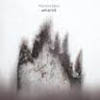 Lopez’ music has a way of getting under my skin, in the same way the faint whine from fluorescent lights and computer screens in an office or the background hum of refrigerators and appliances at home do. While listening to Amarok it becomes part of the environment and the mind filters out its steady subliminal assault. At times I almost forgot I had an album playing, but then the pressure either built up with noise reasserting itself, or it halted abruptly at which times I felt an immediate sense of ease and relaxation. These moments don’t last though and the underlying anxiety (both frigid and animalistic) inevitably returns.
Lopez’ music has a way of getting under my skin, in the same way the faint whine from fluorescent lights and computer screens in an office or the background hum of refrigerators and appliances at home do. While listening to Amarok it becomes part of the environment and the mind filters out its steady subliminal assault. At times I almost forgot I had an album playing, but then the pressure either built up with noise reasserting itself, or it halted abruptly at which times I felt an immediate sense of ease and relaxation. These moments don’t last though and the underlying anxiety (both frigid and animalistic) inevitably returns.
Although one continuous work, there are clear movements or sections within Amarok. The first is like a slow wind that gradually builds up into a gale of near white noise with a driving pulse of low-end macerating beneath. The storm of sounds disperses abruptly before descending back into an icy oblivion where it meanders around for a while longer.
For me, the high point of the 64 minute soundscape comes early on, in what I hear as a second movement to the work, starting around the 16 minute mark. It also places the recording in the context of its given name: Amarok is a monstrous wolf in Inuit mythology that tracks down and devours anyone who is foolish enough to hunt alone at night. I can hear the bestial snarls of this creature—compoundeded from what manner of source material I know not—as it tramples through snowy arctic wastes. At first it sounds like chains being drug across the ice, or the heavy chug of an ocean liner. Whatever the original field recordings were of, they quickly transform into vaporous snarls. The bestial growls of terror become slightly more defined while leaving plenty of room for my imagination to fill in the gaps.
The long remainder of the album is not as blatantly horrific though it is unsettling. Recorded between 2007-2009 and evocative of desolate isolation, Lopez claims it is the “spookiest work I’ve ever done.” It is easy to agree with him on this point, based on what else I’ve heard from this extremely prolific sound artist. He is clearly a master at creating soundtracks for inner cinema. Approaching the work as if I was at one of his concerts, blindfolded, I am able to pay proper attention to the minutiae of sound. As a cunning craftsman he is able to shape it to precise effect.
samples:
Read More
- John Kealy
- Albums and Singles
 What initially drew me to Anthony Mangicapra’s work was his reminiscence to classic Nurse With Wound and irr. app. (ext.) pieces and over the last few years his own style has become more distinct, his own artistic voice becoming a firm command to listen. On this cassette, the sound he has been developing appears to have undergone another shift and both sides of the tape reveal new facets of his approach to sound.
What initially drew me to Anthony Mangicapra’s work was his reminiscence to classic Nurse With Wound and irr. app. (ext.) pieces and over the last few years his own style has become more distinct, his own artistic voice becoming a firm command to listen. On this cassette, the sound he has been developing appears to have undergone another shift and both sides of the tape reveal new facets of his approach to sound.
On “What the Flame does not Consume,” Mangicapra explores the ritualistic aspects of his work as Hoor-paar-Kraat. Sustained tones and plucked strings fill the listening space while ominous percussion sets the mood for it all. It is one of the most menacing things I have heard from Mangicapra but much like a siren, the danger is accompanied by a transfixing beauty. There are echoes of some of the pieces from his Eureka Tapes trilogy but it is evident that Mangicapra is developing a new sonic palette; richer and earthier than before.
A very different piece takes up the B-side of the tape; “Oil & Ash” is a collage of comedy and spoken word recordings spliced together to remove the context, the sense and indeed the punchlines (or leaving just the punchlines). The chirpy babble of cut up voices eventually degenerates into a soup of chipmunk vocals, vinyl static and disembodied sound. Any of the whimsy present at the start of the piece has been dispatched as he leaves us in a clearing, far away from any recognizable landmarks. We are lost as the darkness falls.
Read More
- Administrator
- Albums and Singles
 Among the current crop of instrumental bands that worship at the shrine of Cluster, Tangerine Dream, and Manuel Göttsching, Roll the Dice are perhaps the most underrated. In the wake of their enjoyable, self-titled debut on Digitalis last year, In Dust is a massive step forward—as striking and cinematic as the best synth-based albums I've heard in recent years.
Among the current crop of instrumental bands that worship at the shrine of Cluster, Tangerine Dream, and Manuel Göttsching, Roll the Dice are perhaps the most underrated. In the wake of their enjoyable, self-titled debut on Digitalis last year, In Dust is a massive step forward—as striking and cinematic as the best synth-based albums I've heard in recent years.
The liner notes of In Dust read like a dream for fans of this stuff. The album was recorded in Stockholm on purely analog equipment (in a nutshell, synthesizers and piano); mixed in a remote studio in Norway; mastered by Stefan "Pole" Betke in Berlin. There's a fantastic depth of sound throughout, and a constant sense of forward propulsion as the synths buzz, echo, shudder, pitch, throb and reverberate—subtly evolving, even as they circle around the same chords over and over and over. Listen, for instance, to the oddly uplifting "Way Out," which repeats for 11 minutes like a music box built around the same four chords, before dropping out in a flash—out of batteries, it seems.
Ultimately, "Way Out" is an anomaly; it floats, light as air, whereas the rest of In Dust is constructed around a dark, heady undercurrent. The propulsive "Maelstrom" is a textbook example, with its densely layered synth oscillations, muffled low-end pulse, and detached piano playing. There is no shortage of well-crafted drama as the album plays on; if anything, the tension has been cranked up significantly since last year's debut. Outside of Roll the Dice, Peder Mannerfelt played guitar and keys with Fever Ray a couple years back and his bandmate, Malcolm Pardon, cut his teeth on TV and film composition. Together, it was only a matter of time before the duo married a Kosmische pulse with cinematic grandeur this seamlessly.
If there's a parallel to be drawn, Roll the Dice's Olympic leap forward on In Dust is not unlike Emeralds' progression into mellifluous, hi-fi synth-scapes on Does It Look Like I'm Here?—perhaps that band's peak. In Dust is as sonically rich and sprawling as that album, if not as condensed; while Emeralds distilled their core sound into three- and four-minute "pop" songs, Roll the Dice take the opposite approach, generously stretching out. Nearly everything settles comfortably in between five and eight minutes, but never feels overcooked or dull. Rather, the length maximizes the widescreen nature of the songs, allowing the meticulous arrangements and production to become truly immersive.
Samples:
Read More
- Administrator
- Albums and Singles
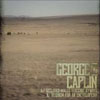 After a brief introductory song that sets the languid tone, the second throws out a hook with a luxurious bass line, reeling me in. At this point bootgazing becomes the order of the day. On their seventh release the duo easily straddles starry eyed left-field pop and drones as expansive as America's western plains.
After a brief introductory song that sets the languid tone, the second throws out a hook with a luxurious bass line, reeling me in. At this point bootgazing becomes the order of the day. On their seventh release the duo easily straddles starry eyed left-field pop and drones as expansive as America's western plains.
The first disc of this double album is enchanted and imagistic, evoking memories of dust flickering in the air like warm snow as shafts of light pour through the windowpanes. The songs are generally slow, though never sluggish. The events of the album proceed according to the logic of a surrealist film, creating non-linear moods as opposed to strict narrative. Yet the landscape is recognizable: it's a place on the western side of the Mississippi where buffalo roam the wild and where vaqueros rassle steeds.
There is nothing country about this album although there is plenty of melancholy, beer-crying twang. This is exhibited best on "Wilderness Eyes," which also features supple vocals and round splashes of tambourine and snare which keep the pace from falling completely into the wilderness of analog synth tones that are prominent throughout the twelve songs. I enjoy it when the singing is showcased, especially on "Sleep Deep," whose propulsive bass line recalls favorite moments from groups like Wire or Gang of Four. The instrumental songs which dominate the album investigate the use of keyboards as if they were banjos, the amplified sonority of slide guitars, random snippets of AM truck stop radio, all drizzled with syrupy synthesizer sweetness akin to cherry pie had at a late night diner. This is a great soundtrack for a road trip: a rural voyage into the land of low dunes and tall grass. It is warm and smooth enough to comfortably allow the drift of ones own thoughts, while still retaining enough kick and bite to propel me down the highway on a lonely night.
The second disc, "Requiem For An Encyclopedia," recalls the infinite libraries and labyrinths of Jorge Luis Borges. The twelve tracks correspond to the twelve volumes of an encyclopedia, the first piece being "Volume A-E", the second "Volume C-D" all the way down to "Volume W-Z". Listeners are also encouraged to approach this disc as a curious mind approaching an encyclopedia, to open it up at random and read the articles in any order. As an encyclopedia it is not meant to be tackled straight through, A to Z, but as a reference to be returned to again and again. Composed of short loops ranging from 36 seconds to just under two minutes it is best left to play on shuffle for hours on end. Truly soothing and vibrant it sweeps from low end to high end with lush and lulling simplicity. There is a recurring flute or woodwind sound that swirls around with the synthesizer like a humming bird darting back and forth, hovering and zigzagging around fruits and flowers. And it is as pleasant to listen to as a humming bird is to watch.
samples:
 
Read More
- Administrator
- Albums and Singles
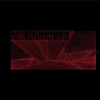 Frank Baugh has been beguiling me with his warm and wobbly soundscapes for a couple of years now, but this is his first "proper" album.  I wasn't quite sure what to expect, as I have only heard a fraction of his vast catalog of limited-edition tapes and CD-Rs, making it very difficult to follow his chronological evolution. Also, I was secretly hoping that he was holding back some truly staggering material for his auspicious vinyl debut. After hearing it, I don’t think Fields and String eclipses his past work, takes things to another level, or delivers any major surprises, but it certainly reaffirms what myself and Frank's small-but-devoted following already knew: he makes some uniquely beautiful music.
Frank Baugh has been beguiling me with his warm and wobbly soundscapes for a couple of years now, but this is his first "proper" album.  I wasn't quite sure what to expect, as I have only heard a fraction of his vast catalog of limited-edition tapes and CD-Rs, making it very difficult to follow his chronological evolution. Also, I was secretly hoping that he was holding back some truly staggering material for his auspicious vinyl debut. After hearing it, I don’t think Fields and String eclipses his past work, takes things to another level, or delivers any major surprises, but it certainly reaffirms what myself and Frank's small-but-devoted following already knew: he makes some uniquely beautiful music.
Describing Sparkling Wide Pressure's sound is not an easy undertaking, as Baugh's work superficially has a lot in common structurally with ambient and drone music, but his objectives are far more ambitious.Frank's work seems intent on making a strong emotional connection, evoking adjectives like "bittersweet," and "nostalgia-soaked" while remaining steadfastly subtle and sublime and eschewing almost everything conventionally song-like.When he is at his best, Baugh's collages capture the feel of half-remembered memories and the innocence of youth, teasingly obscured by flickers, tape decay, and hiss.In fact, one of Frank's common sound sources makes the prefect metaphor for the entire Sparking Wide Pressure aesthetic: forgotten, time-ravaged home videos.
"Clear Pathway" begins the four-song album with a murky drone burbling with a chorus of awesomely mangled, wrong-speed voices.It is definitely a very striking piece, especially once the slow, off-kilter beat kicks in, but Baugh's somewhat invasive guitar playing ruins the spell a little bit for me.It isn't that he is a bad or unimaginative guitarist, but the mere fact that there is a "riff" transforms the piece from something mesmerizingly warped and hallucinatory into a very deranged jam. The side closes with longer, slightly more structured "Jeremy Moves," which bolsters an '80s film soundtrack-sounding synth bed with whimsical flurries of chimes, before slowly escalating in weirdness with slow motion train noises, snatches of voices, and strangled guitar ruin. It ultimately ends up being the best song on the album, as its somewhat unpromising opening motif is quickly (and permanently) buried beneath an avalanche of rhythmic, melancholy mindfuckery that unfolds until the very end.
The second side opens with the jangling, aggressively lo-fi guitar of "Summoning," which calls to mind a slightly more tuneful Jandek.As with most Sparkling Wide Pressure songs, however, the song gradually and seamlessly drifts into something else. In this case, something that sounds like a damaged tape of some synthesizer-based krautrock.Thankfully, it shifts gears yet again and gets noticeably better, morphing into rumbling washes of warm sounds and a haze of tortured flutes and echoes that fragilely holds together for the rest of the song's duration.The album's final piece, "Completely Inside," is also its most brief, clocking in at a mere five minutes.At first, it seems like relatively standard-issue Sparkling Wide Pressure, shimmering and quavering disorientingly beneath a shambling guitar solo.Unexpectly, however, its final minute drifts into a brilliant outro that resembles Popol Vuh's beautiful and haunting Aguirre: The Wrath of God theme.It is both exasperating and endearing that Baugh can just toss out something absolutely perfect with no warning like that, then end the song without elaborating any further.Of course, that unpredictability is what keeps me eternally curious about each new release, as I never know quite when (or if) inspiration will strike.
I am a little sad to say that Fields and String is not Frank Baugh's masterpiece, but it is a likable, unique, and solid album strewn with many excellent passages anyway.I definitely had unfairly high expectations, as I have been occasionally floored by his work in the past and expect each new effort to be better than the last.It doesn’t work like that and I have probably heard so many Sparkling Wide Pressure tapes that their impact is hopelessly and permanently blunted for me now.Regardless, this is probably a fine introduction for anyone unfamiliar with Baugh's work (particularly the second half of "Jeremy Moves").Also, it is a bit more widely available and high-profile than anything else he has done, so it will definitely be his most popular album by default.That suits me perfectly fine. I suspect that whichever Sparkling Wide Pressure album a person hears first is destined to be their favorite.
Samples:
(This is a vinyl-only release, so no mp3 samples are available.The entire album can currently be streamed here though.)
Read More
- Administrator
- Albums and Singles
 This rather unusual anthology compiles the nascent works of pioneering electronic/computer composer Pietro Grossi and several of his contemporaries and collaborators. Unsurprisingly, the music assembled is often quite challenging, discordant, minimal, somewhat primitive, and historically important. Unexpectedly, however, several of these 40-year-old pieces sound like they could have been recorded today. I am not sure how much direct influence Grossi may have had on the contemporary electronic avant-garde scene (given the historic rarity of his recordings), but he certainly anticipated and explored many now-commonplace elements of extreme/outré music decades before the rest of the world caught on.
This rather unusual anthology compiles the nascent works of pioneering electronic/computer composer Pietro Grossi and several of his contemporaries and collaborators. Unsurprisingly, the music assembled is often quite challenging, discordant, minimal, somewhat primitive, and historically important. Unexpectedly, however, several of these 40-year-old pieces sound like they could have been recorded today. I am not sure how much direct influence Grossi may have had on the contemporary electronic avant-garde scene (given the historic rarity of his recordings), but he certainly anticipated and explored many now-commonplace elements of extreme/outré music decades before the rest of the world caught on.
Pietro Grossi began his musical career as a celebrated cellist, but became fascinated by electronic music's potential in the late '50s and threw himself into it whole-heartedly.In 1963, he founded the S 2F M (Studio di Fonologia Musicale di Firenze) in Florence, which became both an educational center and a place for like-minded iconoclasts to record their spectacularly uncommercial music.That interest soon expanded into the composition of computer-based music in 1967, an ambition that later blossomed into the research and creation of very early music software.All of those activities made Pietro quite instrumental in the advancement of the music that he loved, even if his own recordings have fallen into relative obscurity.Pietro was not content with just being a cellist, professor, composer, and software designer though–he was also a rather unconventional and rigorous theorist and his ideas and ideals provided the foundation for many of the compositions included here.
The first half of this double-disc set is a bit of a broad-stroke overview of '60s Italian electronic music.Of the nine pieces, only the first three are by Grossi and all are excerpts from lengthier, highly conceptual pieces.The first two do not hold up particularly well today, but they were certainly quite forward-thinking and adventurous for their time, being among the earliest forays into sound installation, ambient music, and phase-shifting.The third piece, despite working with the same primitive technology, is markedly more complicated and rewarding however.As with all Grossi pieces, there is a very cerebral underpinning: "OM" is comprised of several overlapping and oscillating electronic permutations of patterns from Bach's "Musical Offering" performed by Grossi and his students.(Spoiler alert- it does not sound at all like Bach.)
The rest of the disc is rounded out by solo works of Grossi's students, colleagues, other composers who recorded at S 2F M, and two pieces recorded at Italy's other two electronic music centers (NPS and SMET).Obviously, given the time period, there is a very limited sonic palette available: nearly every piece is built upon slow-moving and sparse analog electronic tones.Despite that handicap, several of the pieces manage to achieve an impressive depth and complexity through discordant harmonies and quivering oscillation.Vittorio Gelmetti's soundtrack for Michelangelo Antonioni's "Red Desert" and SMET's "EL 25" are probably the most unsettling and accomplished of the lot, but NPS's "Interferenze 2 (1967)" is also quite striking–its final 30 seconds are essentially Merzbow.
The second disc is devoted entirely to Grossi, however, and focuses on his computer-based work.The sequencing is truly bizarre, but it is bizarre for a reason: Pietro had a firm belief that his works should remain "open," which meant that he encouraged other composers to elaborate upon them and envisioned music as a collective experience.Those ideas of flux and interactivity provide the structure for everything here: 22 pieces spanning from 1970 to 1985 are included and it is suggested that the listener use the "shuffle" function to "create infinite variations."Also, several of the pieces are themselves variations and permutations upon works by other composers (Scarlatti's "Sonata 119" and Bach's "The Art of The Fugue").
As a whole, I found the second disc to be somewhat exhausting and markedly less rewarding than the first, but several individual pieces were quite good.Notably, the material is often quite a bit more complicated than Grossi's work from the '60s, which turns out to be both a blessing and a curse (Pietro was maybe a bit too fascinated with his newfound ability to string together inhuman clusters of dissonant bleeps).I actually preferred the cold, ominous ambience of the eight "Sound Life" pieces to everything else here, which are not too far removed from Grossi's pre-computer work.They would have been perfect as the soundtrack for 2001: A Space Odyssey.
Unfortunately, the rest of the album is mixed bag: I did not like the digitized Bach interludes at all, many pieces sound quite similar to one another, and I did not quite understand the value of the two silent pieces.Maybe I should have utilized the "shuffle" function more.There are a few other likable pieces scattered about though, ranging from an approximation of an especially spirited game of Asteroids (one version of "Create") to an approximation of that same Asteroids machine having an absolutely apoplectic freak-out ("Monodia").The "'80s arcade game"-style pieces also share quite a bit of textural and structural similarity to recent noise music at times (or to several Raster-Noton artists, as a Dusted critic insightfully pointed out before me).
I had an extremely difficult time formulating a firm opinion of Combinatoria, as it is equal parts flawed and fascinating.As a history lesson and an introduction to very obscure music and ideas, it is fairly successful.As a listening experience, it left a lot to be desired, as many pieces now sound dated, ridiculous, repetitive, or painfully shrill.However, there were also a handful of rather stunning works.Obviously, the more dated-sounding pieces are unavoidable victims of electronic music's four decades of further evolution beyond these recording sessions, but I would have much preferred a more discerning and brief selection of his major works.This retrospective definitely piqued my interest about both the man and his work, but Combinatoria is too uneven, frustrating, and overwhelming to be a definitive overview.
Samples:
- Vittorio Gelmetti, "Modulazioni Per Michelangelo"
- Aurelio Peruzzi, "Studio 1"
- Pietro Grossi, "Monodia"
Read More


